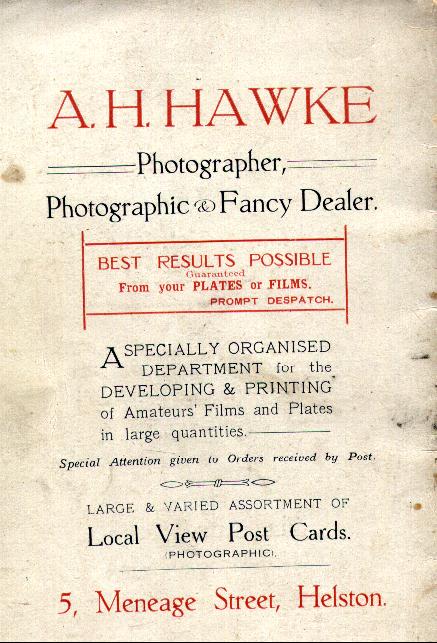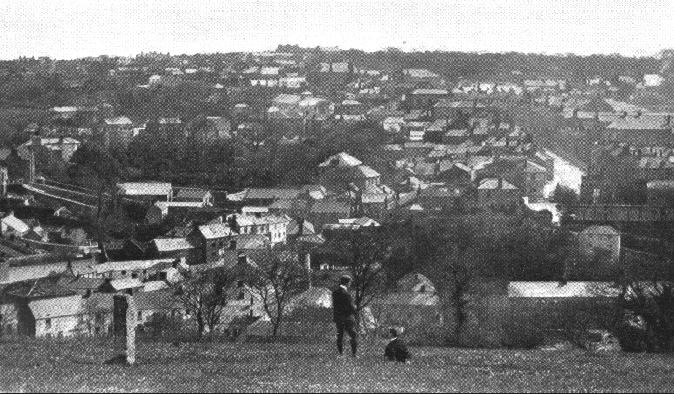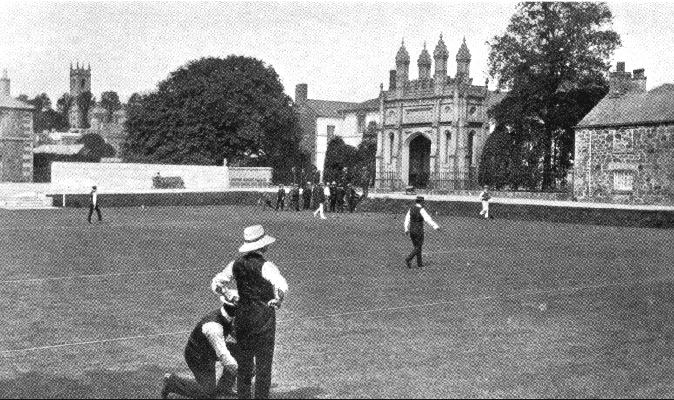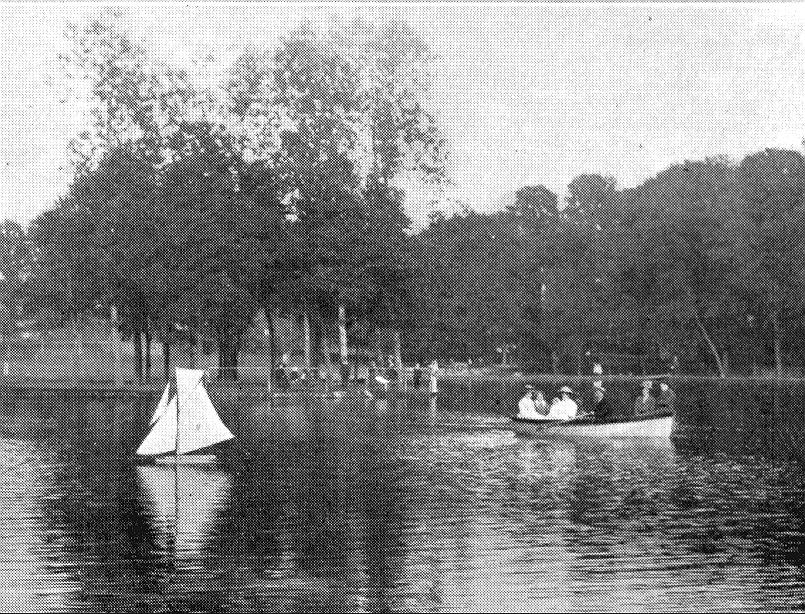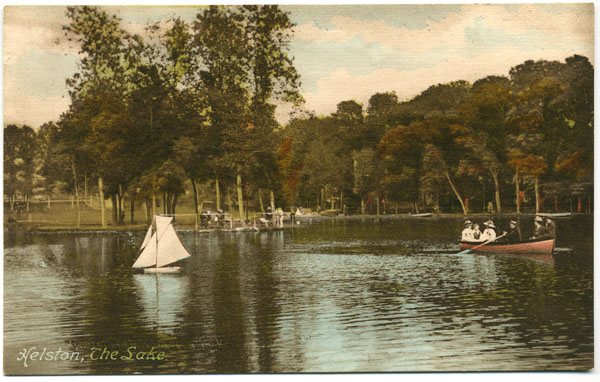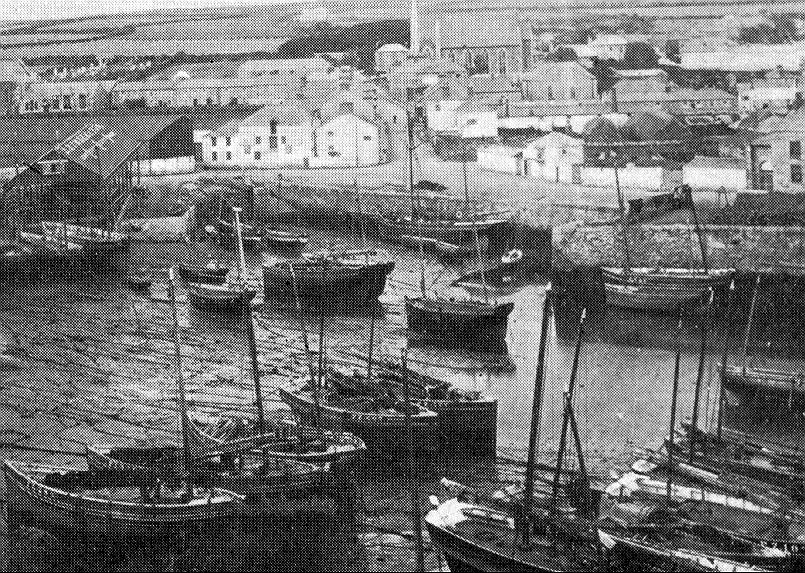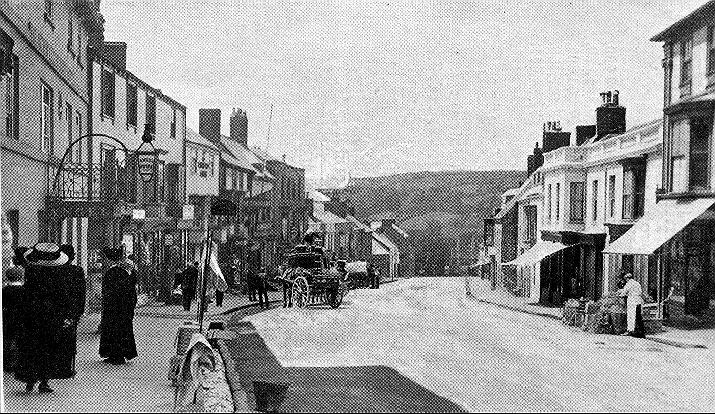A.H.Hawke Photographer
ROGER LACEY
INVESTIGATES THE HELSTON MOTORING POSTCARD PUBLISHER
THERE CAN be few people who have been involved in taking photographs, producing and selling picture postcards, for nearly 50 years but one gentleman who was, and deserves recognition for such lengthy service is Alfred Herbert Hawke.
He was born on February 7th 1881 at 11 Richmond Terrace, Lower Easton, Bristol, the son of Richard and Eliza Hawke who had been married in the Liskeard area of Cornwall early in 1868. Richard was a cabinet-maker and is thought to have been a native of Helston.
Extensive research hasn’t yet revealed when A.H. Hawke started his photographic business in Helston, but the West Briton newspaper of 11th Feb 1904 reported the recent formation of an Amateur Dramatic Society in Helston, of which Mr Hawke was joint Hon. Secretary. He also played a major part in a play with a most apt title for someone who was to be involved with postcards, called “Temporary Insanity”, and his next appearance was in a one-act drama called “A Rough Diamond” a type not unknown in the postcard world.
He was certainly involved in postcards by 1905, when he issued a postcard showing the wreck of the Barque the “Noisel” at Praa Sands, between Helston and St Michael’s Mount. Shipwrecks and lifeboats were to feature on numerous occasions on his cards in future years. Helston, the most southerly town in Great Britain, might, to some people, seem to be rather isolated, but it was close to the south Cornish coast, and there were 20 wrecks in the next 12 years within 15 miles of Helston. A motor car would enable him to get to the scene before some of his rival Cornish photographers, and on 27th June 1906 he took out his first driving licence. Mr Hawke liked to put his car in a photograph and his vehicles appear at regular intervals. His first car, a three wheeler, had the registration “CO 925”.
His address in June 1906 was 46 Meneage St, which was called “The Studio”. He married, on 27th March 1907, Miss Clara White at St Michael’s Church in Helston. She was the daughter of a Mrs White of Meneage St. In April 1907 he moved to new premises, at No 43 Meneage St, the newspaper report of the move commenting that “Already the window presents an attractive appearance.” This building, now occupied by a firm of solicitors, has, at first floor level, two dates, 1703 and 1913. The latter refers to a major alteration and a Hawke photograph exists of the enlargement of his studio at No. 43. The owner of these premises was a Joseph White, probably a relation of his wife, though not her father.
ROYAL VISIT
Prior to the outbreak of the first world war, Mr Hawke produced postcards to a high standard in keeping with the “Golden Era”. These were mostly of Helston and The Lizard area, but he did get in the car and venture to the North Coast for the visit of the Prince &Princess of Wales to Newquay in June 1909. The Royal party stayed two nights at the Headland Hotel (8th & 9th June). On the afternoon of Wednesday 9th they travelled by road to visit the Royal Cornwall Show at Blackcross near St Columb Major, stopping en route in the village of St Columb Minor to meet the venerable Parish Clerk of that parish, aged 103. Mr Hawke recorded the occasion on a postcard, showing the future King George V, who is reported to have said “I’m glad to make your acquaintance, you are a grand old man. ” Mr Carne, whose father and grandfather had both been Parish Clerks of St Columb Minor, died on the 7th October that year, his doctor remarking that he never got over the excitement of meeting the Prince, or possibly of having his photograph taken by Mr Hawke; we shall never be sure!
RESTRICTIVE PRACTICES
The first world war was never going to last long, according to the experts in the autumn of 1914, so Mr Hawke bought a new car, a Morgan 3 wheeler “runabout” AF 1459, first registered on 4th Jan 1915. 1915 was a significent year for him, for his wife presented him with twin boys, brothers for their 4-year-old daughter. Outdoor photographic activities were hampered that summer by “DORA”, Defence of the Realm Act, which prohibited sketching or photographing of “sensitive” areas, which covered all the Cornish Coast. He would have had to concentrate on his studio business, which would be helped by all forces personnel having their pictures taken, often produced with a postcard back. One such card with a message referring to the war suggests that, for the only time in his long career, Mr Hawke had premises outside Helston, for printed on the back of this photograph is “A.H. Hawke, Helston & St Ives”. So far, I have been unable to locate where in St Ives he had premises. Did he take over a studio from a St Ives photographer who had gone into the forces? It’s possible. His turn to join up was soon to come. A military tribunal in October 1916 granted him 3 months deferrment, and in 1917 he joined the Royal Flying Corps as a photographer.
FLORA DANCE
On his return from the Air Force, Mr Hawke acquired new premises at No. 5 Meneage St., where he was to remain until his death. These were centrally situated near the junction of the two main shopping streets, Meneage and Coinagehall Streets. For three or four years, he also had what is understood to be a studio, opposite at No. 10. No. 5 Meneage St. was on the route taken by the Flora Day Dance (each May 8th, unless this fell on a Sunday, or Market Day, Monday, when it is usually brought forward to the previous Saturday). It must have been hazardous to have a Brass Band and excited dancers processing through his shop, and no doubt the more expensive cameras were packed away before the big day. The writer of his obituary said that “He did much to secure national publicity for the Flora Dance by having photographs of dancers and scenes in the town published in London and other up country newspapers.” The writer could have mentioned the hundreds of postcards bought that he had produced. He began issuing postcards of Flora Day as early as 1906, when the band shown on No. 13 was the Helston Volunteer Band, a forerunner of the Territorial Army. Following the introduction of the childrens’ dance in 1922 there were even more cards issued each year. What mother could fail to buy a card showing her child?
January 28th 1920 saw Hawke obtain Cornwall County Council driving licence No. 23227, and soon he was out on the road taking photographs over a wider area than he had covered previously The 1920’s aren’t considered good years for the postcard trade, but Mr Hawke was going into mass production. His black and white pictures covered that part of Cornwall which was within about 5 miles of, or on, the coast. His production, for a one-man business was large. For example. There are at least 71 different views of Mawgan in Pydar parish, both inland and coastal; this a parish whose total population in the 1931 census was only 732 and situated some 30 miles away from home. He paid more than one visit, as shown by two cards taken at Mawgan Porth on the coast road from Newquay to Padstow. The first, 1696, shows Mr Hawke sitting at the wheel of his car (AF5929) on an unmade road, the next No. 1918, taken probably in the early 1930’s, shows a tar macadam road and his car, now (CV 1096), has a roof.
HOTEL BUSINESS
He must have spent a considerable amount of time making contact with village shops to sell the cards. A 1930’s view outside Beach Cottage at Porthcothan, giving prominence to their own advertisement board, no doubt sold well inside.
He did get commissions to feature certain hotels such as the Bedruthan Steps near Mawgan Porth and a series of the Bay Hotel in Newquay. He also ventured into North Devon, producing a series of views of Clovelly and also of Appledore. Sorting out all the accounts must have occupied someone for many hours! Mrs Hawke?
HISTORY TRIPS
A feature of the 1920’s was the formation of the “Old Cornwall Societies” which still flourish. They began with the realisaton that the Cornwall of pre-1914 was gone, and were accompanied with a revival of the Cornish language and a general interest in dialect, and what we now term conservation. Mr Hawke was concerned in the formation of the Helston branch, and they held their first meeting on 17th November 1924 in his studio. Another founder member was an old companion from his Dramatic Society days, Mr A.S. Oates, and tribute was paid to the pair of them for work they were doing to “arouse interest in local history and antiquities through the medium of lantern lectures given in neighbouring towns and villages”. Mr Oates did the talk and Mr Hawke operated the slides, and no doubt sold a few postcards over a cup of tea and a saffron bun or two at the end. They drove as far as Newquay one evening in March 1930 to give a talk to the Old Cornwall Society there entitled A Corner of Cornwall’; the district between Helston and The Lizard.
It could well have been because of contacts made at such meetings that Hawke paid a photographic trip to the other two Cornish Spring “festivals”, the Hurling at St Columb Major and the May Day Obby Oss at Padstow. He produced a series of postcards on each event, the only occasion he is known to have made cards of either being in 1930.
The Helston Chamber of Commerce published a guide book in the late 1920’s, entitled “Helston, The Hub of the Cornish Riviera” price 6d. Mr Hawke supplied most of the illustrations, and took a full page to advertise his business. He claimed, “Wherever you roam in the West Country ask for Hawke’s views, (post-cards, snaps etc.), and you will get the best.” A tourist who moved on from the Lizard area to stay in South Devon would soon find that part of the West Country didn’t appreciate his talent. He didn’t use the local papers to advertise, but throughout the 1930’s appeared in a Cornish Directory & Guide, which ran to over 350 pages covering all aspects of trade and industry, with a short description of each area. It’s from this we learn that he was also a tobacconist during this era. Smoking was not then regarded as anti social, end it would have helped boost his income in a town that only had a resident population of just over 3,000.
MORE DISASTERS
Disasters at sea were still happening and St Ives had the misfortune to experience the loss of two lifeboats within 12 months. The “Caroline Parsons” was wrecked on the night of 31st January 1938. 5 seamen, which she had already rescued, being drowned, and on 23rd January 1939 a worse calamity occurred when the replacement boat the “John & Sarah Eliza Stych” was wrecked off Godrevy, with the loss of 7 of the crew of the lifeboat. Mr Hawke produced cards recording both these tragic occasions.
From his return from the forces Hawke’s postcard work was directed towards the tourist trade, and to interest them in aspects of the Cornish character, he produced a small series called “Real Cornish”; with a small picture and a Cornish folklore joke underneath.
MUSEUM VENTURE
1937 saw the opening of the first museum in Helston, a small one in the Guildhall, Mr Hawke being one of those who helped to get the venture started. The war caused its closure, and ther is now an excellent museum which is well worth a visit. Whilst doing research into the life of Mr Hawke we (myself and my friend and collector of Hawke cards, Clive Benneyl) saw the curator who was most helpful in putting me in touch with the widow of the gentleman who bought the shop from Mr Hawke when he retired on 1st March 1952. She told me that when they began there, Mr Hawke, who still lived in the flat above, was a great help to her husband as he had no previous experience of printing view cards. Everything was printed on a Gravura machine fed with rolls of postcard-sized paper and worked by hand.
This confirmed that he was still producing cards after the second world war, and no doubt took an interest in the business below his flat until he died on May 11th 1958, aged 77.
Apart from the early “Real Photographic” and special event cards, Mr Hawke gave a number to each card. One series was prefixed with the letters HH, otherwise they just had a number. Some cards have a number as high as 21631, but most are four figures. He seems to have allocated blocks of numbers to a locality, but then beats his own system by allocating a number to three different views; for example 1635 is on a view of Goldsithney, one of Helford and one of Newquay, other similar examples occur, and there are huge gaps in numbers which appear unused.
VERDICT
How should we judge the standard of Mr Hawke’s cards? Prior to 1914 he had to compete with other excellent Cornish photographers, such as Bragg, Govier, and Wootton, and his best work was produced in that era. Standards changed in the 1920’s and 1930’s, and to compete with the nationals such as Frith, Valentine and Judge, the price had to be right. Visitors were happy to buy a series of, say Bedruthan Steps where they had spent the day, even if the cards only showed sea and rocks. Hawke, whilst catering for them, still produced cards showing transport, adverts, dress, and pastimes of the era, which have given us a record of life in Cornwall in the first half of the 20th century.
For this he deserves to be fondly seems to have allocated blocks of remembered, and thanked.
The above article has been reproduced on the `HELSTON HISTORY` website by the kind permission granted by its author,
Mr ROGER LACEY
